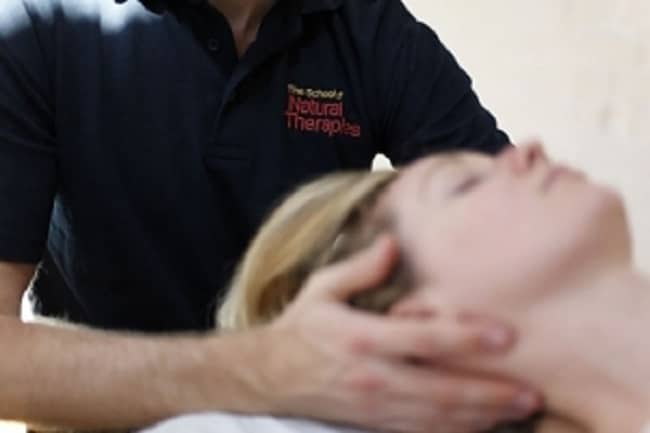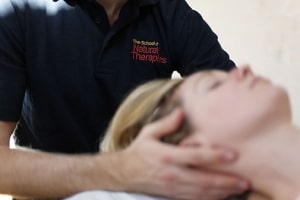Massage has become a necessity more than a luxury over the past few years because of the many known health benefits it provides. It is offered in spas, health clubs, clinics, hospitals, and even administered as a home service by people who underwent professional massage lessons and training.
If you are getting a massage for the first time, here’s everything you must know to get the most out of it.
Page Contents
Common Types of Massage
Generally, massage refers to rubbing, pressing, and manipulating the skin, ligaments, tendons, and muscles. It can range from light strokes to deep pressure.
To get the most out of your massage therapy, here are the common types of massage to choose from.
● Swedish massage – This is the gentlest type of massage that makes use of kneading, vibration, long strokes, tapping, and deep circular movements to help you relax and revitalize.
● Sports massage – This is quite similar to Swedish massage, but it is primarily intended for people involved in different sport activities to minimize, stop or treat injuries.
● Deep tissue massage – This type of massage makes use of more forceful, slower strokes to stimulate the deeper layers of connective tissue and muscles. This is the right choice when dealing with muscle damage from injuries.
● Trigger point massage – This form of massage focuses more on areas of tight muscle fibers caused by overuse or injuries.
● Hot stone massage – This type of massage makes use of heated stones in addition to hand manipulation to ease muscle tension and relieve pain.
● Aromatherapy – This form of massage combines gentle pressure with the use of essential oils that are diluted first before the therapist applies it to your skin.
7 Benefits of Massage
Studies have shown that massage offers benefits, including a significant reduction in muscle tension and pain. But for you to reap these benefits, you must get a massage on a regular basis.
Here are the benefits of getting a regular massage:
1. Improves mood
Massage can make you feel great both physically and mentally. Also, it can treat anxiety and depression as it helps lower the level of cortisol (stress hormone) in your body while increasing the levels of feel-good hormones like dopamine and serotonin.
2. Relieves headaches and back pain
Are you always suffering from migraine headaches? Massage can help. Migraines are often a result of poor sleep quality and stress. With regular massage, you can get better quality sleep, which then can minimize or eliminate episodes of headaches.
Back pain is one of the most common reasons why people seek massage. Studies reveal that massage is far more effective when it comes to treating back pain than pain relievers and other forms of therapy.
3. Lowers blood pressure
Most people today suffer from high blood pressure, which can result in heart attacks and stroke. Studies have shown that even a weekly 10-minute back massage can significantly lower blood pressure.
4. Boosts flexibility
Staying flexible is crucial, regardless of whether you are an athlete or someone who is losing some range of motion in the hips or knees.
Massages help maintain range of motion and flexibility by working the tendons, connective tissue, muscles, and ligaments. Also, massage triggers the production and preservation of natural lubricants found in the connective tissue fibers.
5. Improves circulation
With the use of hands-on manipulation, circulation is improved as it helps move the blood through the damaged, tensed, and stiff muscles and other parts of the body. Moreover, the pulling, twisting and squeezing action helps remove lactic acid from the muscles. And this can result in the improved circulation of lymphatic fluid that carries metabolic wastes away from your muscles and other organs.
6. Corrects posture
Body pain that results from different sources can result in poor posture. Regular massage can help properly align the body by loosening and relaxing the muscles and giving the joints greater flexibility and freedom. As a result, the body can position itself in a better, upright posture.
7. Strengthens the immune system
The combination of stress, poor nutrition, and sleep disturbances can have a negative impact on your immune system. With regular massage, stress is reduced, and the body’s ability to transport nutrients and the cytotoxic ability of your immune system is enhanced.
In addition, massage can treat signs and symptoms of both common and rare medical conditions. These include fibromyalgia, carpal tunnel syndrome, digestive disorders, and temporomandibular joint pain. It also helps with post-surgical rehabilitation.
When to Avoid Massage

Despite the great benefits of massage, not everyone can benefit from it because of certain conditions. These include people with:
● Fractures
● Severe osteoporosis or thrombocytopenia
● Deep vein thrombosis
● Bleeding disorders
● Healing wounds or burns
Moreover, you should avoid getting a massage if you have a fever, are nauseated, and had recently been involved in an accident. In any case, you must have a medical consultation first before scheduling an appointment with a reputable massage therapist. Otherwise, massage can do more harm than good to your health and well-being.
What to Expect
There is no special preparation required when getting a massage. But before the session begins, your therapist will ask you about your medical history and any symptoms you might be feeling at the moment. After that, your therapist will explain to you the type of massage that best suits you.
Typically, you undress or wear loose clothing for a massage. After that, you must lie on a table with your body covered in a sheet. In some cases, you may sit in a chair with your clothes on. Then, your massage therapist will evaluate tense or painful areas and figure out the amount of pressure to apply. To reduce friction, oil or lotion may be applied.
Depending on the type of massage you choose, a typical massage session can last for up to 90 minutes. During the massage, don’t hesitate to ask for lighter or deeper pressure.
Some types of massage may leave you feeling a bit sore, which you can feel the next day. But massage must not be uncomfortable or painful.
As you can see, there are different types of massage – each giving lots of health benefits. But there are instances when massage should be avoided. Use this guide and make sure to find a reputable massage therapist to get the most out of your regular massage sessions, and become healthy and fit.
AUTHOR BIO
Marc Innes is the Owner and Principal of the School of Natural Therapies, a training school for Massage & Holistic Therapies located in London. Marc is passionate about massage and complementary therapy industry.




